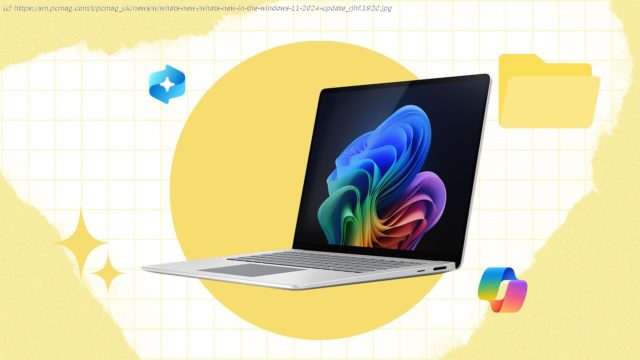New core code, convenience features, and eye candy, along with exclusive Copilot+ PC bonuses, grace the 24H2 version of Windows 11.
We didn’t get Windows 12 this year, but the annual update to Microsoft’s flagship desktop operating system still brings several welcome new features. Some of the splashiest additions, including Live Captions and Cocreator image generation, come to a subset of Windows 11 computers called Copilot+ PCs. These use neural processors to perform AI tasks locally rather than in Microsoft’s cloud. But non-Copilot+ PCs get enhancements as well in the just-released 24H2 version, aka Windows 11 2024 Update. These include a redesigned Copilot experience, more secure underlying platform code, and better phone integration. Here’s a rundown of the changes.New Platform Code
Microsoft rewrote some of the core Windows platform’s kernel code in the Rust programming language, which should make the OS faster and less prone to memory bugs. This isn’t a minor change, and it’s been four years in the making. Coders can get into some of the nitty-gritty details in the video presentation below. Two additional welcome platform capabilities are hot-patching updates for fewer disruptions to your computer use and support for Wi-Fi 7.Updated Start Menu With Phone Link
Phone Link has become one of the more useful Windows features, so it only makes sense to add it to the Start Menu. The new panel shows your phone’s battery level, connectivity status, and recent messages and calls. The feature works only with Android phones initially, but iPhone support will roll out later. Of course, if you haven’t connected your phone to Windows, you won’t see the new panel.
Smaller updates to the Start Menu include the ability to drag pinned icons directly to the Taskbar.New File Explorer Features
Context buttons for things like Cut, Copy, and Delete now get text labels in File Explorer’s right-click context menu. The system also now supports TAR and 7z compression, though you can’t password-protect archives you create with this feature. With this update, you can edit the metadata of PNG image files, too. A right-click context menu lets you duplicate a tab, just as you would in a web browser.
You can already wirelessly transfer files back and forth between certain Android phones and Windows, but 24H2 adds an entry in File Explorer just for the transferred files.New Taskbar Features
You can now scroll down the Quick Settings panel for more options. You could already customize which settings appear on the panel, but it’s nice to be able to access all of the possible settings. You can drag and drop any setting buttons to a new position in the panel to suit your preference.Updated Power Settings Interface
Windows is slowly getting rid of all those legacy interface elements that are surprisingly persistent. I’m talking about the small white control panel dialogs that occasionally pop up when you dig deep into settings. With 24H2, at least one more of these outdated interface elements bite the dust: the power settings. This section now includes an Energy Saver mode, which differs from the longstanding Battery Saver mode in that it reduces overall energy consumption from background tasks rather than just from demanding apps running in the foreground. You can set it to turn on at a specified battery charge percentage and decide whether it should lower screen brightness when it is active. Do your part for the planet!Copilot Changes for Regular Windows 11 PCs
Copilot’s icon is no longer pinned to the right side of the taskbar. It now gets a regular app taskbar icon that you can place where you like. And Copilot’s window doesn’t take over the right side of the screen in a sidebar panel that blocks other apps either; its window behaves like that of any other app. You can resize it to taste and overlap other app windows with it.
I’m disappointed that Copilot no longer has any PC control capability, even though those it had were weak to the point of being almost useless. You could ask it to open an app or switch to dark mode before, but then you needed to approve these actions by clicking a button. Just opening the app the old-fashioned way was quicker. The previous Copilot could open Settings to a specific page, but calling out to a web service for this functionality didn’t make sense.






